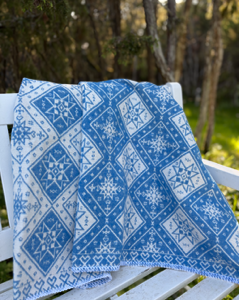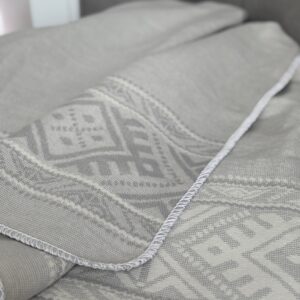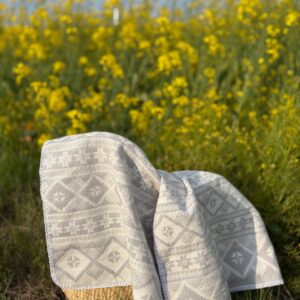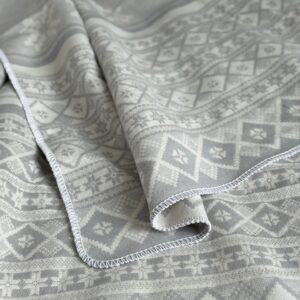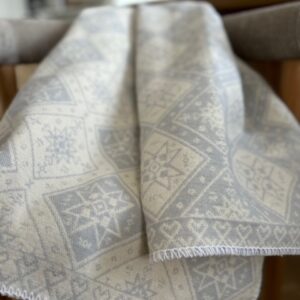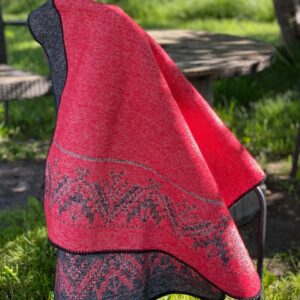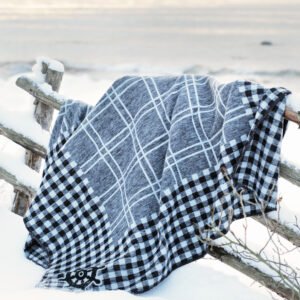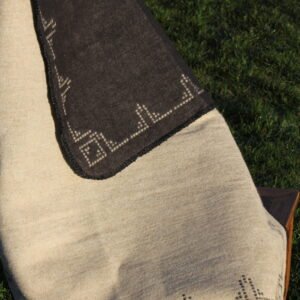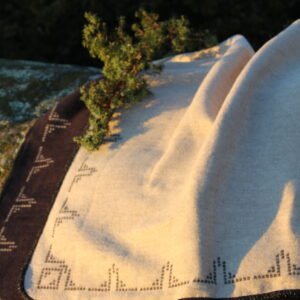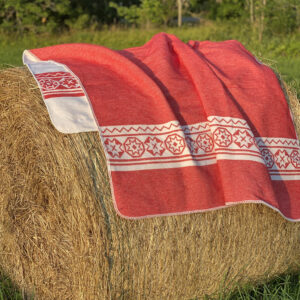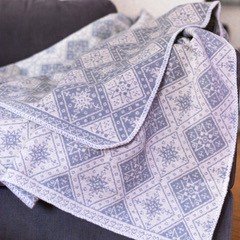+ Näita rohkem
-
70x200, 100% cotton
-
Mõõdud 140 x 200 cm 100% puuvill Lääne-Eesti saarte tekk
-
70x200, 100% cotton
-
70x200, 100% cotton
-
Mõõdud 70 x 200 cm 100% puuvill, hall Lääne-Eesti saartre sall Varrastel kootud kampsuneid ehk vatte (teisisõnu ka villsärke, soesärke) hakati Muhus kuduma 19. sajandi teisel poolel. Vatid olid nii eest nööbitavad kui ülepea käivad, nii lihtsama kui kaunima moega. Enamasti olid need tumedavärvilised, aga leidus ka valgeid. Kirjatud vatte valmistati hilisematel aegadel ning enim armastatud mustriks oli männamuster. Ka Ellu sallid on kudunud oma Muhu sallidesse männamustri, mille ajalugu olevat saanud alguse Tamse valla kandi oranži -musta värvilistest meestevattidest, mis on populaarsed tänini. Lisaks tuntud männamustritele iseloomustab vatte aukartustäratav mustritihedus. Neid meesteriideid kooti väga korralikult ja hoolega. Kõige uhkemad vatid kooti suure armastuse ajel - pruutidel oli kombeks valmistada antud rõivaeset oma peigmeestele, pulmadeks. Imetlust pälvib ka detailiderikkus. Meie esiemades vallandusid tõelised moedisaineri oskused. Vatte ilmestasid huvitavaid detailid küll kaelustel, taskuklappidel ja varrukasuudel. Üks väga nutikaks peensus asub vati seljaosas millel on lausa oma nimi – vati nipp. Antud nimetus tuleneb maainimese argipäevast, kanal on teatavasti just taolise kolmnurkse kujuga taguosa – kana nipp. Selline raskust andev lisadetail, nn nipp, kooti vati seljatüki alaserva, aidates rõival kummardumisel vöö vahel püsida ja selja soojas hoida. Kõik mainitud lood kinnitavad Muhu saare käsitöö rikkusest, mida peetakse Eesti rahvakunstis üheks kirkamaks ja mustriküllasemaks. Hoidkem meie mustreid, kandkem meie mustreid. Õlakatete kandmise traditsioon ulatub kaugesse minevikku. Üleviskerätt ehk sõba peeti rahvariiete hinnatuimaks osaks, mis kuulus põhiliselt piduriiete juurde. Sõbaga käidi külmadel ilmadel kirikus ja külas, soojemal ajal lisas riietusele, väärikas sõba käsivarrel, pidulikkust. Sõba tegemine nõudis teiste riietega võrreldes märksa rohkem vilumust. Seetõttu hoiti neid väga ja pärandati põlvest-põlve edasi, samuti nagu sõbakudumise oskusedki.
-
-
-
Dimensions 70 x 180 cm 70% cotton, 30% flax Hiiumaa scarf is inspired by Pühalepa folk costumes. Pühalepa is an amazing place that also inspired the creator of the scarf, Magnus Lõppe from Hiiumaa. Shades of the shawl are taken from the oldest overall coat in Hiiumaa – long coat, sewn from sheep-brown woollen fabric. Long coat (“jäku” in Estonian) was very much loved in Hiiumaa. It was worn by both men and women.
-
Dimensions 105 x 180 cm 70% cotton, 30% flax Hiiumaa scarf is inspired by Pühalepa folk costumes. Pühalepa is an amazing place that also inspired the creator of the scarf, Magnus Lõppe from Hiiumaa. Shades of the shawl are taken from the oldest overall coat in Hiiumaa – long coat, sewn from sheep-brown woollen fabric. Long coat (“jäku” in Estonian) was very much loved in Hiiumaa. It was worn by both men and women.
-
Dimensions 140 x 200 cm In Muhu, unlike many other places, wrap and plaid were distinguished - wrap was bigger. Plaid was also being worn across one’s shoulders in this area. Embroidering of plaids was started before the I World War. These plaids were made by professional embroiderers. Embroidery of Muhu is peculiar and characteristic of the people of Muhu Island. The embroidery is divided into two major groups: geometric and plant pattern.The most typical, most used and the oldest geometric pattern motif is closed into an orderly octagon. This motif, that was called Muhu Whisk and was believed to be a sign of luck and rebirth, was often used on woollen plaids.You can see the whisk pattern motif on MUHU scarf.
-
Dimensions 140 x 200 cm 70% cotton, 30% flax In Muhu, unlike many other places, wrap and plaid were distinguished - wrap was bigger. Plaid was also being worn across one’s shoulders in this area. Embroidering of plaids was started before the I World War. These plaids were made by professional embroiderers. Embroidery of Muhu is peculiar and characteristic of the people of Muhu Island. The embroidery is divided into two major groups: geometric and plant pattern.The most typical, most used and the oldest geometric pattern motif is closed into an orderly octagon. This motif, that was called Muhu Whisk and was believed to be a sign of luck and rebirth, was often used on woollen plaids.You can see the whisk pattern motif on MUHU scarf.
-
Dimensions 140 x 200 cm 70% cotton, 30% flax In Muhu, unlike many other places, wrap and plaid were distinguished - wrap was bigger. Plaid was also being worn across one’s shoulders in this area. Embroidering of plaids was started before the I World War. These plaids were made by professional embroiderers. Embroidery of Muhu is peculiar and characteristic of the people of Muhu Island. The embroidery is divided into two major groups: geometric and plant pattern.The most typical, most used and the oldest geometric pattern motif is closed into an orderly octagon. This motif, that was called Muhu Whisk and was believed to be a sign of luck and rebirth, was often used on woollen plaids.You can see the whisk pattern motif on MUHU scarf.


